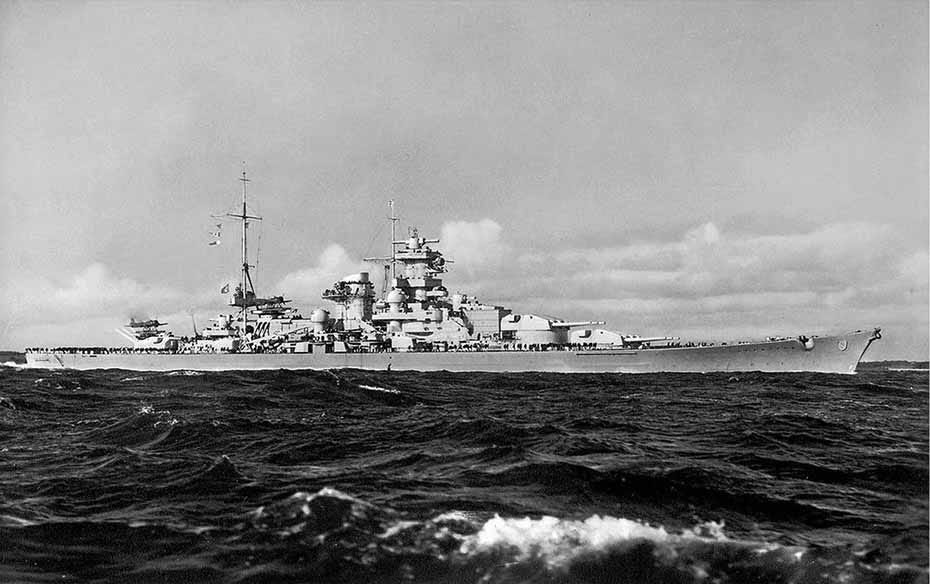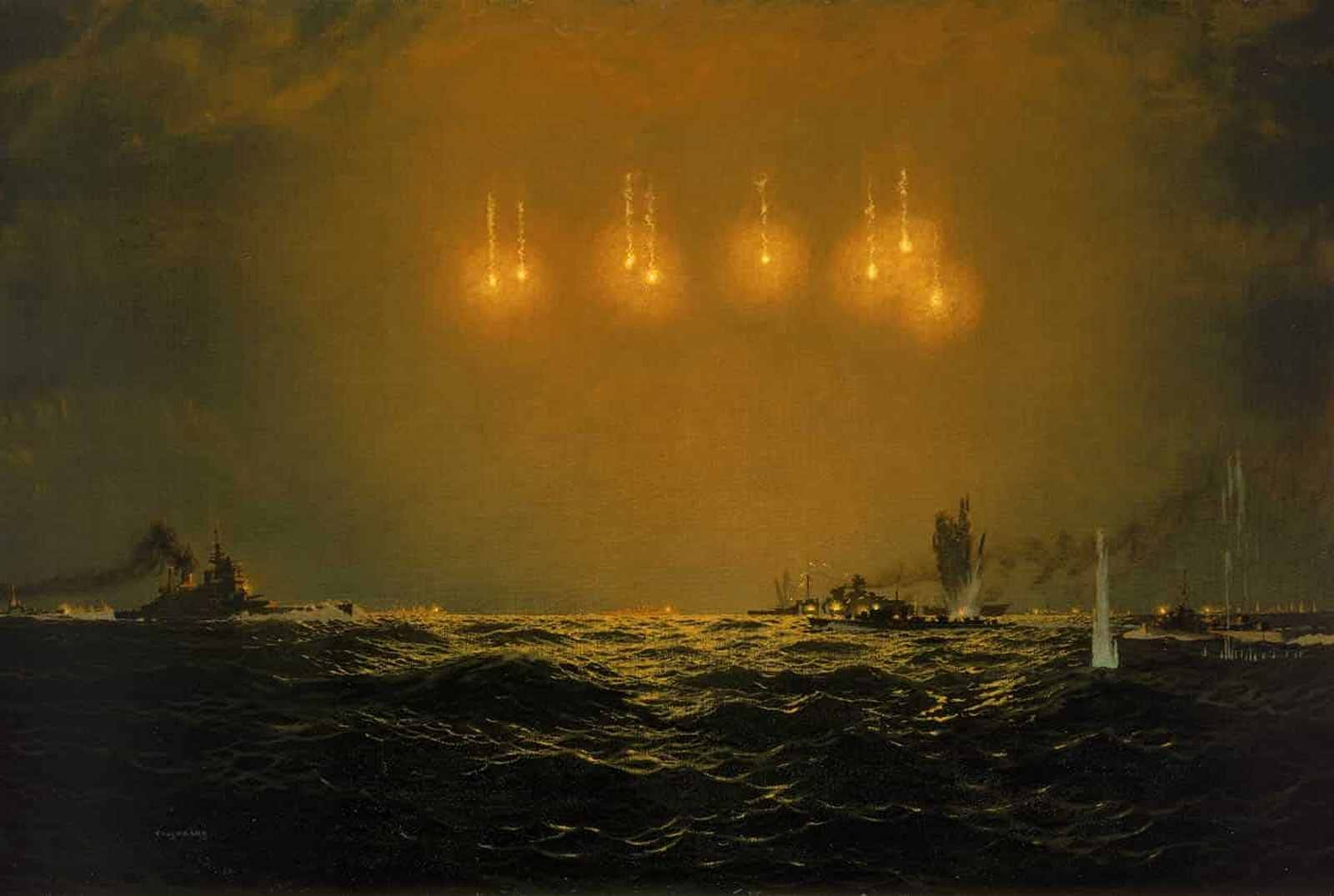The Battle of the North Cape
26th December 1943: After a long chase amidst snowstorms north of Norway the Scharnhorst is sunk by a full broadside from the battleship HMS Duke of York
Hitler had become disillusioned with his navy. Before the war the Kriegsmarine had had ambitious plans for a surface fleet with impressive capital ships. The building programme had produced the Bismarck, the Tirpitz and a number of smaller 'pocket battleships’. As a result, the Germans had several powerful ships - yet never produced such an overwhelming force that the Royal Navy could not contain them.
‘The men would dutifully appear, more shells would arrive and ‘bits of them’ would go up past him in the gunnery tower.’
And the only real use Hitler had for his warships was as surface raiders that could sink merchant shipping. The demise of the Bismarck had demonstrated how hopeless they were in this role - the German ships were so big and such a threat that they were closely monitored by the Royal Navy, who would put to sea in force to sink them whenever they ventured out.
And so it happened again. Goaded by Hitler's latest rage about the uselessness of his navy, the 'pocket' battleship the Scharnhorst had been sent out to do her worst. On Christmas Day 1943, the Scharnhorst and several destroyers sailed out from Norway to attack Russia-bound Arctic convoys.
By this time, the British were easily reading German radio traffic, so no such attack could be a surprise. In fact the Royal Navy were actively awaiting it and had two strong forces ready to attack, one sailing from Murmansk and the other from Scapa Flow in Scotland, including the battleship HMS Duke of York - 'the Duke'. Ever since the sinking of HMS Glorious in 1940 they had a score to settle. There had also been the embarrassing debacle of the 'Channel Dash' in 1942.
It was going to need the combined firepower of several ships to sink the Scharnhorst, a battle that was fought amidst snow storms in the freezing seas north of Norway, played out in the twilight world of a Boxing Day afternoon.

Ernest Reeds1 was on board the heavy cruiser HMS Belfast:
14:00 a message was received from the Duke which read “We are closing in on the Scharnhorst and our combined speed is 53 knots and are expecting to open fire in an hour’s time”.
14:27 We sighted “Scharnhorst” on the horizon and opened up with Starshell followed by 6” tracer. We fired 203 rounds of 6” and salvos from Scharnhorst fell just astern. Again she altered course and this time she almost got away. She would have done had not the Destroyers gone in and attacked with torpedos - 3 of which scored direct hits.
In the attack the Destroyers were travelling at 38 knots. That slowed the Scharnhorst down to 24 knots and gave the “Duke” and “Jamaica” a chance to close in on her.
18:15 “Scharnhorst” is now 15 miles ahead and the “Duke” and “Jamaica” are to our Starboard.
18:50 We opened fire again with Starshell and 6” firing to the port side. Our speed is over 32 knots and waves are breaking over continuous still making it hell but no-one takes much notice of it.
19:00 “Scharnhorst” is in sight and the Duke and her have started firing main armament.



